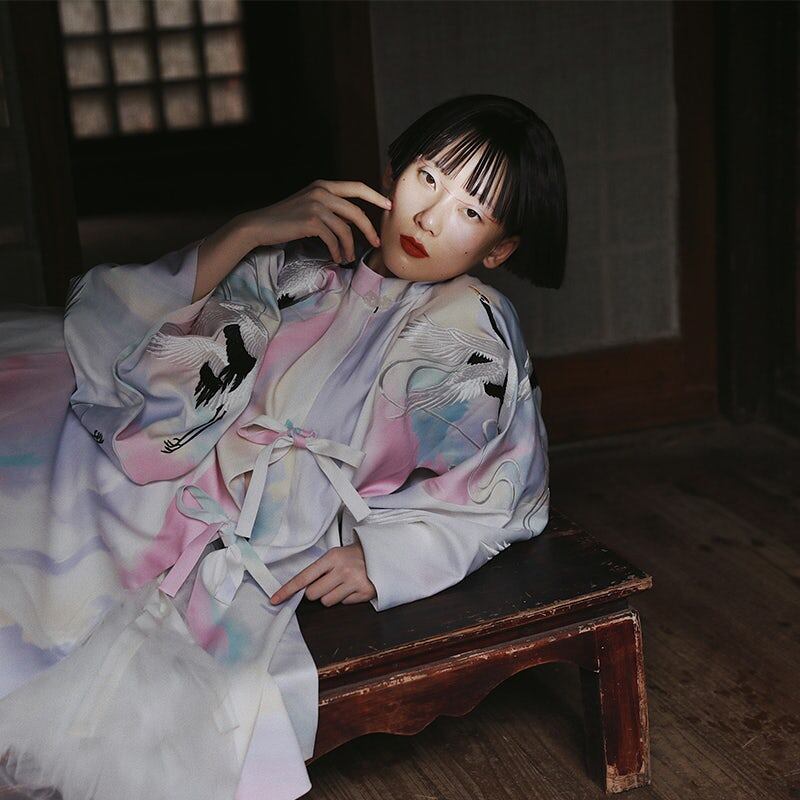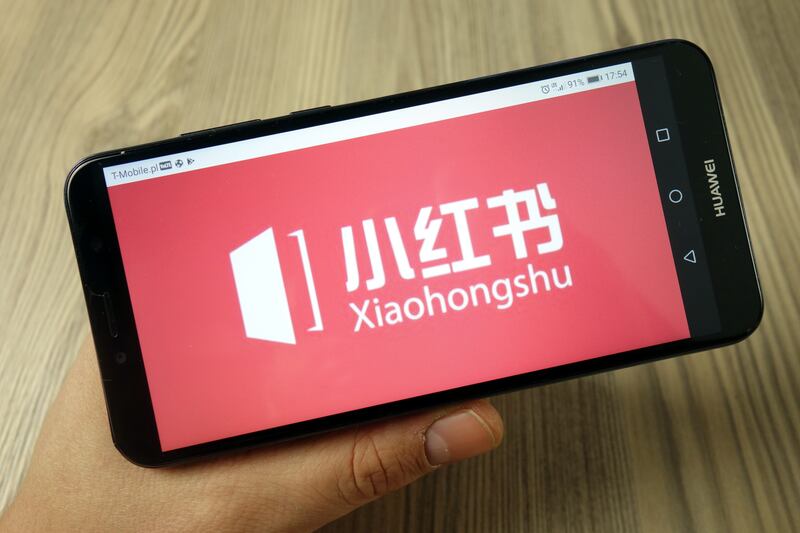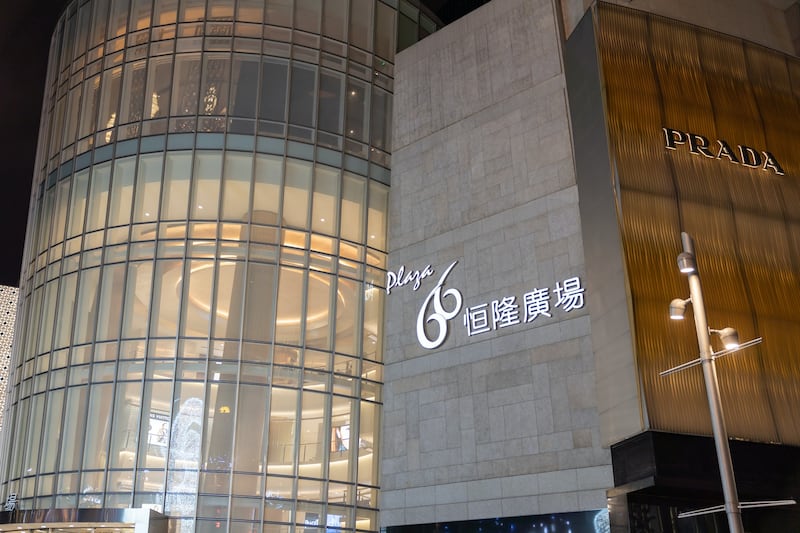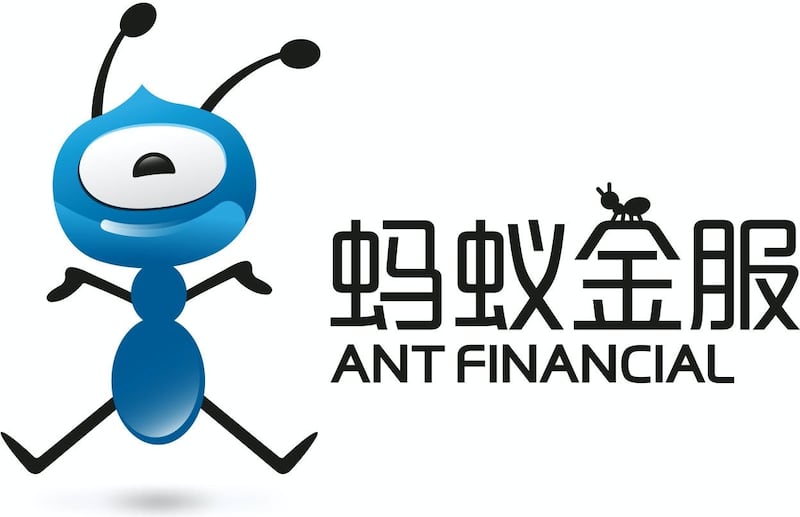
The Business of Fashion
Agenda-setting intelligence, analysis and advice for the global fashion community.

Agenda-setting intelligence, analysis and advice for the global fashion community.

SHANGHAI, China — This week, Louis Vuitton launched a men's collection far from its Paris base. Instead, it was unveiled in a major catwalk show in Shanghai's artsy West Bund district, with a thousand invitees on hand to see not only the Spring/Summer 2021 collection from Artistic Director Virgil Abloh, but also a re-run of the label's Fall/Winter 2020 outing.
Having a thousand people come together — in person — to attend a fashion show seems an almost unimaginable luxury right now but, in Shanghai, where there has been no reported community transmission of Covid-19 for many months, large-scale fashion events have been back in business since mid-summer.
In a nod to how ready Chinese consumers are to embrace luxury fashion after being robbed of summer shopping sprees in Europe, these events have proven incredibly popular, with the city's fashion-forward crowd flocking to brand launches and exhibitions. (The livestream of the Louis Vuitton show clocked up about 85 million views, according to the brand). This is good news for luxury brands, who are more reliant on China's domestic spend than ever.
This new generation of Chinese male consumers is… the next battleground.
China's luxury consumers are a lifeline for brands, and men make up a significant portion of that customer base, especially for leading brands such as Louis Vuitton and Dior, which have ridden a global wave of streetwear popularity in recent years to invigorate their respective men's offerings under the creative direction of Virgil Abloh at Vuitton and Kim Jones at Dior.
ADVERTISEMENT
Most Brands Need to Catch Up with a Few Menswear Leaders
"I foresee this being a milestone event for the Chinese market," said Dan Cui, formerly the fashion director of GQ China and editor-in-chief of the local edition of GQ Style, who now oversees a fashion brand consultancy he called Caius. China is not only the biggest overall luxury market but also the biggest men's luxury market in the world.
“Louis Vuitton does not need brand awareness building in China, but it does need to [show its male customers in China] that it’s bringing something new [and that] it’s changing [as the customers are changing]. This is especially significant during the pandemic period,” he added.
Predictably, the invitation list of the Louis Vuitton show is light on international brand ambassadors, media and influencers, with travel bans keeping most guests from outside mainland China away. So, unlike many major fashion shows, the majority of seats at this runway will be filled by Chinese VICs [Very Important Customers], those who Louis Vuitton hopes will actually buy the pieces making their way down the catwalk.
Though male consumers have not garnered the same attention as their female counterparts, observers say that is changing, with major brands like Louis Vuitton putting a renewed focus on Chinese men post-pandemic. However, other luxury players are either not sufficiently focused or not moving fast enough.
“There has been a huge focus on women in recent years in line with the increased [consumer] sophistication and the rise of women’s empowerment. [But] today, we are certainly seeing signs of brands starting to play “catch up” [when it comes to] luxury menswear, [which] is gaining momentum as [Chinese] men begin to experiment more with fashion and self-expression,” explained Angelito Tan, chief executive of consultancy firm RTG Group Asia.
“We anticipate the sector to get more competitive as it heats up, with newcomers and a renewed focus on developing men’s lines at the leading houses. Marketing to this new generation of Chinese male consumers is the next opportunity and the next battleground for the years to come,” he added.
Although China’s luxury market was initially fuelled by men, women became the dominant luxury demographic by 2018, accounting for 71 percent of luxury purchases. However, this suggests that almost a third of luxury goods are still purchased by men.
ADVERTISEMENT
To put that into context, Deloitte figures estimate Chinese consumers spent $145.7 billion on luxury products that year, which suggests the Chinese men’s luxury market was still valued at over $42 billion in 2018.
More broadly, menswear already accounts for almost half of the clothing industry’s total sales value in China, according to Daxue Consulting, a Chinese-focused market research and management consulting firm, and in recent years an increasing number of domestic leaders in the mass market segment have launched menswear lines.
The expected continuation of this increase in spending on fashion and beauty categories among men in China means the male consumer represents one of the biggest opportunities for global luxury brands to grow during the pandemic.
Who is China’s “Typical” Male Luxury Consumer?
Though there is a stereotype of China’s male luxury consumers being largely Post-90s fuerdai (second generation rich kids) spending their parents’ money on the latest show pieces, gender-bending streetwear and edgy accessories, data from Agility Research & Strategy paints a very different picture of the “average” male luxury consumer in China.
Men in third-tier cities have been outspending those in first and second tier cities when it comes to luxury.
“From our June sample (of interviews surveying a thousand affluent Chinese consumers), 81 percent are using money from their salaries, investments and bonuses to buy luxury products. Only two percent inherited their wealth,” said Amrita Banta, managing director at Agility Research & Strategy. “[So] the typical luxury consumers are businesspeople; white collar workers.”
Banta added that post-pandemic sentiment also sees China’s affluent men wishing to “reward” themselves with luxury products — both for their hard work and for the ordeals they endured during 2020.
“Only one third talked about status or feeling more confident but the majority talked about having products that match the quality of life they want to have,” she said.
ADVERTISEMENT
China's bailing (white collar) workers have always been casually dressed, in comparison with their Western counterparts. Beyond their very highest-level meetings, politicians in China are mostly seen in shirtsleeves and tie-less. In offices around the country, a uniform of Uniqlo T-shirts or polo shirts are worn with leather belts from brands like Gucci, usually foregoing briefcases in favour of man-bags and leather backpacks from brands such as Hermès and Louis Vuitton.
Although much of the marketing activity and collective attention is given to luxury consumers in China’s biggest cities, according to Banta, men in third-tier cities have been outspending those in first and second tier cities when it comes to luxury goods in the first half of this year.
There is also a difference in the luxury brands that are popular among first and second tier city men in China, compared to their lower tier counterparts. According to data from luxury e-commerce platform Secoo, major luxury brands still dominate among lower tier consumers, who may have more recently made the leap onto the luxury ladder. Burberry, Prada, Ralph Lauren and Gucci are among the most searched brands. For first tier consumers, a more expansive list of brands, including Raf Simons, Acne Studios, FOG and Off White are proving popular.
The “Deloitte-Secoo CIIE Blue Paper 2019,” released in conjunction with the China International Import Expo last November, claims that male consumers in lower-tier cities have actually surpassed their female counterparts in terms of online purchases of luxury goods.
“This is good news [for brands, because it means] you can go much further than the 40 cities maybe you did business in before. It’s hundreds of cities your brands can reach into by partnering with Alibaba’s Luxury Pavilion, or JD.com [for luxury e-commerce],” Banta said.
Leverage Gaming, Sports and Business for Marketing
For brands, the question isn’t just about where and how to best reach Chinese men; it’s also about focusing better on identifying the target market. One potentially problematic area for brands to consider is their matrix of brand ambassadors.
Although there is no shortage of male celebrities in China who act as ambassadors for luxury brands, many of the most popular luxury spokesmen — Cai Xukun, Wang Junkai, Jackson Yee, Xiao Zhan — overwhelmingly fit the xiaoxianrou (little fresh meat) mould, and are chosen more for their fervent female fan bases than their appeal to male consumers.
Chinese sports stars such as footballer Wu Lei have yet to be tapped as ambassadors.
One solution is to cast a wider net to find other candidates specifically for China’s male luxury consumers based on the men they admire. For the businessmen and white collar workers who make the majority of luxury purchases in China, their heroes are often drawn from the worlds of sports, gaming and business, for example.
Though it might be strange to think of someone like Jack Ma as a fashion influencer, he has been known to drive trends among male shoppers in China, who rushed to buy down jackets from brands such as Moncler, Canada Goose and Bosideng after he was photographed wearing them in public, according to WeChat account BFaner, which chronicles the fashion choices of China's business leaders.
While it is next to impossible for brands to secure China’s wealthiest man as a brand ambassador, there are other well-known men in the world of business who are far more accessible. Ji Shang, the founder and chief executive of 8868 mobile games platform, is not only an admired young entrepreneur, but he has also publicly declared his obsession for sneakers, making him an interesting potential alternative for streetwear brands to collaborate with.
In the world of sports, foreign footballers such as Christian Ronaldo have long featured in campaigns for fashion brands in China, while Chinese stars, such as striker Wu Lei, have yet to be tapped.
Louis Vuitton is one brand that was quick to link the popularity of gaming and e-sports with a potential luxury market segment, by collaborating with Riot Games, creators of League of Legends, the most played PC game in the world.
When the Chinese e-sports team, FunPlus Phoenix, won the League of Legends World Championship in November, they didn’t just go home with the elaborate jewel-encrusted winner’s trophy; they were also presented with a maroon Louis Vuitton trunk. China’s premier gamers had essentially been co-opted as ambassadors for the world’s biggest luxury brand.
Just this week it was announced that Shanghai will play host to the finals of the League of Legends World Championship both this year and next — perhaps opening up more opportunities for luxury brand sponsorship and collaborations with the e-sports world.
Another issue for brands looking to reach male consumers, according to Shanghai-based influencer and fashion digital content producer Xu Fengli, also known in English as Peter Xu, is that conversations about the intersection of celebrity with luxury fashion tend to be dominated by female users on social media platforms that garner the most celebrity and influencer traffic in China.
“[Women] are talking about [sales events] online, they are sharing online [so] it’s just easier to reach them [than men],” Xu said. In other words, the platforms that are currently the most commonly used by international fashion brands to get their message across are not necessarily getting that message across to men.
Though Weibo’s user base only marginally skews female, conversations about celebrities and luxury fashion are driven by women; likewise, conversations and sharing about luxury on WeChat tends to be dominated by female users. On Douyin, 56 percent of users are female and on Xiaohongshu, a whopping 80 percent of users are female.
Xu points to platforms such as sports-focused Hupu and sneaker-focused Dewu (also known as Poizen in English) as massive Chinese online communities dominated by male users, that have still not been leveraged by many luxury brands.
In this regard, Louis Vuitton was ahead of the pack when it became the first international luxury brand to join Poizen in September last year, a move that more brands would be smart to emulate.
Overall, luxury brands have put China’s men’s market on the backburner for too long. Those best placed to capitalise on the men’s opportunity in China will be those who follow the lead of brands like Louis Vuitton by experimenting with non-traditional platforms and influencers, as well as those who embrace e-commerce — where more Chinese men are actively looking to buy luxury goods from an increasingly diverse mix of brands.
时尚与美容
FASHION & BEAUTY

Kong Zhong Yi Tai gives hanfu a stylish and feminine spin | Source: Courtesy
Taobao Maker’s Festival Highlights Emerging Fashion Talents
The fifth edition of Alibaba's annual Taobao Maker's Festival is going on the road this year, touring cities around China, including Alibaba's hometown of Hangzhou, Wuhan (ground zero for China's biggest coronavirus outbreak) and Chengdu. The festival highlights the creativity of emerging designers on the Taobao platform, including fashion designers, with some of those highlighted this year representative of broader trends in China's youth fashion market. Streetwear is, of course, represented, with Wuhan-based brand Graf (which saw its "Hometown Heroes" T-shirts embraced in a big way earlier this year as consumers rushed to support the brand and the people of Wuhan), as is hanfu, the increasingly popular trend for dressing in traditional Chinese garments, which is given a stylish update with designs from the Kong Zhong Yi Tai studio. (Alizila)
Top Trends at China Beauty Expo
Last month, the 25th annual China Beauty Expo became one of the first major trade shows of the post-pandemic era, featuring 3,000 exhibitors. As seen at the expo, major trends include a continued focus on content marketing, a particular interest in anti-aging and sensitive skin repair, as well as products touting "health" benefits, including Traditional Chinese Medicine ingredients. (Premium Beauty News)
科技与创新
TECH & INNOVATION

Xiaohongshu | Source: Shutterstock
Xiaohongshu Drops Commission on Sales to Boost E-Commerce
In an effort to attract merchants to its platform, Xiaohongshu announced it has reduced its platform commission from 20 percent to 5 percent, bringing it in line with e-commerce leader Tmall's fashion and beauty sales commission rates. For traffic coming from Xiaohongshu ads, the sales commission decreases even lower, down to 3 percent. Xiaohongshu is an essential tool for (mostly female) users to read and write product reviews. Buyers use it to do research before purchasing fashion or cosmetics products, but the platform has struggled to convince its 85 million monthly active users to buy products directly from it, rather than heading to Tmall or WeChat mini-programmes to complete purchases. (Walk the Chat)
JD.com and Li & Fung Team Up to Develop Digital Supply Chain
JD.com has subscribed for $100 million worth of Li & Fung's newly issued shares at HK$1.25 each, the Hong Kong-based supply chain manager said in a statement, adding that the Fung family will retain control of 60 per cent of the company's voting rights. The investment will allow Li & Fung to accelerate its shift to an entirely digital supply chain business and comes just over two months after Li & Fung delisted from the Hong Kong stock exchange following a privatisation by a consortium of investors, led by the Fung family and Singapore logistics assets investor GLP. (Press Release)
消费与零售
CONSUMER & RETAIL

The exterior and main entrance of Plaza 66 in Shanghai | Source: Shutterstock
Plaza 66 Sales Grow in Spite of Pandemic
According to interim results released by Hang Lung Properties, the rental income of Shanghai Plaza 66 increased by 9 percent in the first half of 2020, bucking a trend of poor performances among retailers hit by coronavirus-induced closures and a continued reluctance of consumers to return to brick-and-mortar shopping in a big way. The mall actually achieved a retail sales growth of 17 percent in the first half of the year, mainly due to its high concentration of top luxury brands and a re-homing of luxury spend among Chinese consumers more accustomed to buying luxury products overseas. (BoF China)
China’s Online Retail Sales Up 7.3% in First Half
Online retail sales in China grew by 7.3 percent to 5.15 trillion yuan ($735.4 billion) in the first half of 2020, compared with the same period a year earlier, according to data released by the Ministry of Commerce. E-commerce played an important role in keeping Chinese consumers spending in the midst of the coronavirus outbreak, with a quarter of the country's total retail sales happening online in the first half, an increase of 6 percentage points over the same period last year. The number of online shoppers increased by 100 million over the same period, a ministry of commerce spokesperson told media in Beijing, though he didn't reveal the total tally. (Yicai Global)
政治,经济与社会
POLITICS, ECONOMY, SOCIETY

Ant Financial logo | Source: Courtesy
China is Home to Four of the World’s Five Largest Unicorns
China is home to four of the world's five largest start-ups valued at more than $1 billion. Altogether, the country had 227 such companies at the end of March, compared with 233 unicorns currently residing in the US, according to a new study from the Hurun Research Institute. Its list ranks Alipay operator Ant Group, the digital financial services arm of Alibaba Group, as the top-ranked unicorn, with a valuation of $150 billion; the world's second-largest unicorn is TikTok owner ByteDance, with a valuation of $80 billion; third-ranked Didi Chuxing, China's biggest ride-hailing services provider, had a valuation of $55 billion and Lufax Holding, which runs an online wealth management and peer-to-peer lending platform, was fourth with a $38 billion valuation. Elon Musk's Space Exploration Technologies Corp, better known as SpaceX, took fifth spot on the list with its valuation of $36 billion. (South China Morning Post)
China Manufacturing PMI Reaches Nine Year High
Manufacturing activity in China continued to recover from the fallout of the Covid-19 pandemic in July as businesses reported the fastest expansion of output and new orders since January 2011. The Caixin China General Manufacturing Purchasing Managers' Index, which gives an independent snapshot of the country's manufacturing sector, rose to 52.8 from 51.2 in June, (readings higher than 50 signal expansion). The figure adds to evidence that China's economic recovery may continue in the second half of 2020. China's GDP grew 3.2 percent year-on-year in the second quarter, returning to growth after a record 6.8 percent contraction in the first quarter. (Caixin)
China Decoded wants to hear from you. Send tips, suggestions, complaints and compliments to our Shanghai-based Asia Correspondent casey.hall@businessoffashion.com.
With consumers tightening their belts in China, the battle between global fast fashion brands and local high street giants has intensified.
Investors are bracing for a steep slowdown in luxury sales when luxury companies report their first quarter results, reflecting lacklustre Chinese demand.
The French beauty giant’s two latest deals are part of a wider M&A push by global players to capture a larger slice of the China market, targeting buzzy high-end brands that offer products with distinctive Chinese elements.
Post-Covid spend by US tourists in Europe has surged past 2019 levels. Chinese travellers, by contrast, have largely favoured domestic and regional destinations like Hong Kong, Singapore and Japan.